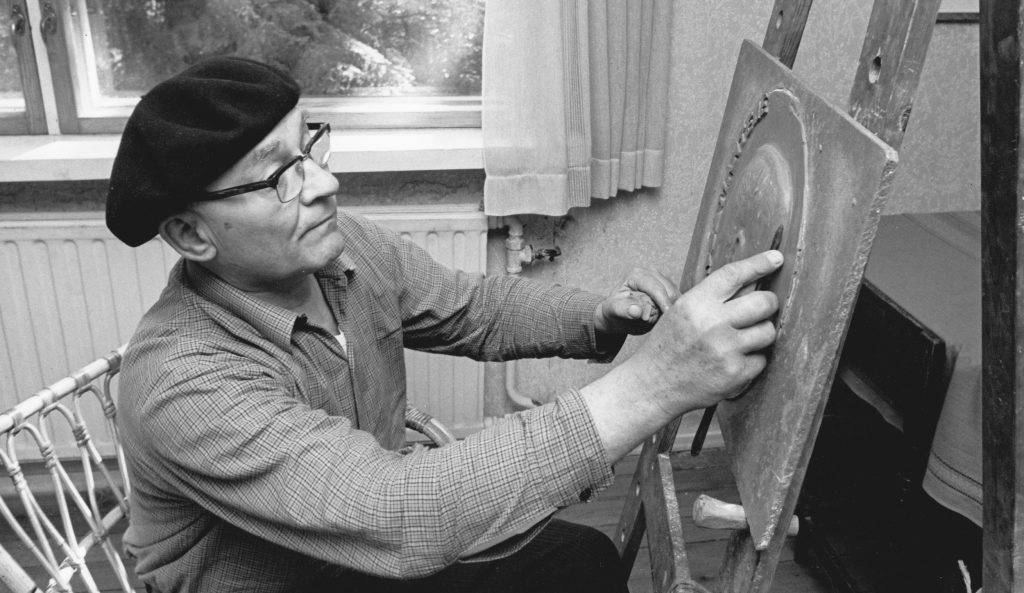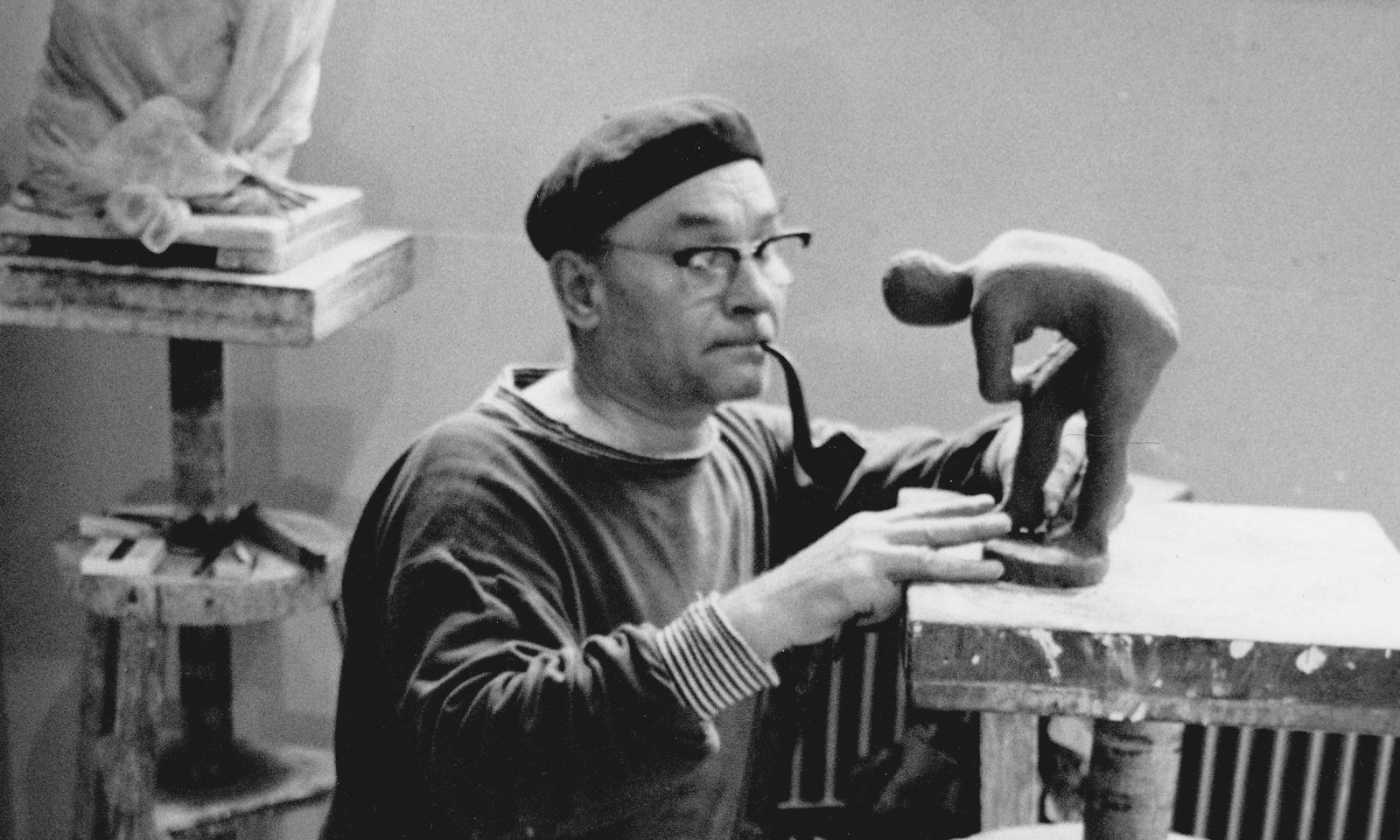Oskari Jauhiainen studied at the drawing school of the Finnish Art Association in Helsinki (later the Finnish Academy of Arts) from 1938 to 1941, mainly as a student of Felix Nylund (1878–1940). He made his first public monumental sculptures, the Juho Vesainen monument (1936, Ylikiiminki) and the Liekki (“Flame”) monument (1937, Pyhäjoki) before he started his art studies.
In the 1940s, Jauhiainen’s output was characterised by miniature sculptures and portraits. Many of his portraits depict people close to him. With his Self-Portrait (1945) he won the first state portrait prize in 1946, and in the following years achieved excellent results in several competitions with his sculptures.
Oskari Jauhiainen’s first major work of national significance is considered to be the Mikael Agricola sculpture erected on the south side of the Turku Cathedral in 1952. The sculpture took five years to complete and was considered a great success.
Jauhiainen also participated in the Marshal of Finland Rider Statue competition in the 1950s, taking the first place with a joint proposal made with Aimo Tukiainen (1917–1996). Jauhiainen, however, withdrew from the project citing artistic differences, leaving the work to Aimo Tukiainen, whose riding statue of Marshal Mannerheim was unveiled in Helsinki in 1960.
Productive artist
After the Second World War, many sculptors spent years working on war memorial projects. Jauhiainen was one of the most productive artists working on statues commemorating the war heroes. Most of them are located in Northern Finland, close to his home region. The austerity and solemnity required of monuments to the fallen is in keeping with his artistic style. The earliest memorial sculptures were rectangular works made of red granite. Since the late 1950s, however, a more modern style more in line with the art trends of the day was in favour in war monuments. As a consequence, a new approach was seen in Jauhiainen’s monuments in the mid-1960s.
Oskari Jauhiainen is also known for his sculptures that depict physical work, highlighting his respect of his roots and remembrance of the work of past generations. At a time when the structure of the society and the professional roles it offered were changing and industrialisation was gaining momentum, illustrating the history of Finnish work to support a sense of national pride was in demand. Oskari Jauhiainen’s sculptures depict traditional craftsmanship and farm work. His plastic style and mode of expression relying on tradition was well suited to the realisation of the national project.
Oskari Jauhiainen’s sculptures also include funerary monuments, such as the Tyko Sallinen (1958) and Väinö Tanner (1971) memorial monuments in the Hietaniemi cemetery in Helsinki. He has also made sculptures with animal themes, especially birds and fish, such as Osprey (1959–1960) in Oulu and Old Wanderers (1984) in Muhos. Sculptures of prominent figures are represented in his work by the memorial statues of Teuvo Pakkala (1973) in Oulu and Werner Söderström (1960) in Porvoo. He also made medal art, designing the medal commemorating the 350th anniversary of the City of Oulu, and worked with heraldist Olof Eriksson on the design of the coats of arms of the towns of Kiiminki and Ylikiiminki.
Other achievements, positions and later years
Oskari Jauhiainen was a member of the October group (1947–1951), founded by a new generation of artists as a protest against what they felt was the stagnant and formulaic world of Finnish art. Jauhiainen’s solemn and classical style that sometimes evoked Egyptian art matched the group’s sombre expressionism, often angular expression and the idea of power coming from within.
Oskari Jauhiainen was a teacher in the Finnish Academy of Art from 1956 to 1965. A particularly close student was Anja Juurikkala (1923–2015), who completed Jauhiainen’s final sculpture, The Raking Girl, in 1991. Oskari Jauhiainen was awarded numerous prizes during his career, including the Pro Finlandia medal in 1956. He was appointed a professor in 1967 and awarded the Finnish title of Academician in 1982.
Oskari Jauhiainen continued his creative work almost to the end. His final works were made in his home region. He died on 20 January 1990 in Helsinki, where he did his life’s work, and was buried in his hometown Kiiminki.

